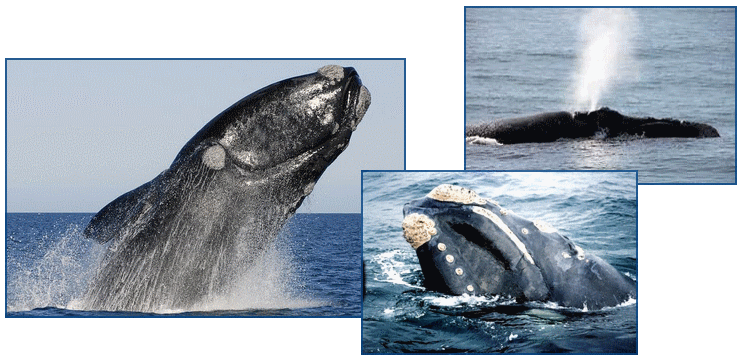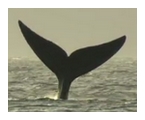The visiting Whales of KwaZulu Natal
Watching a whale playing in the water is a very special experience and privilege. I hope you get to share in this unforgettable experience when you visit our shores.
The whales that are visiting the coastline of KwaZulu Natal every year can be spotted from as early as mid-May and will have left our shores by the end of November.
Whales feed and bulk up during the southern hemisphere’s summer season in the nutrient rich waters of the Antarctic regions.
They travel past our shores during our winter time on their way to their breeding grounds off the coast of Mozambique before turning back and retracting their route back to Antarctica.
These amazing animals travel about 5000 kilometers during yearly migrations, but have been known to travel as much as 25 000 kilometers.
How to spot a whale?
Easy! Keep an eye on the sea and watch out for the following give-away signs:
- Blowing happens when the whale comes up to breathe through their nostrils/blowholes that are located at the top of their heads. Air is first expelled to clear the water from the blowhole before a breath is taken. The forceful exhalation of water creates a telltale misty spout and can be seen up to a few meters above the water surface.
- Breaching is when the whale leaps out of the water in an arching back flip crashing back into the water on its side or back with a loud slapping sound and a lot of water splashing. It might be a form of communication, exercise, to dislodge parasites or just for the fun of it. Breaching often happens several times in succession.
- Lop tailing is the slapping of flukes (lobes of the tail) or the whole tail on the water with a loud slapping sound and seems to be a kind of communication.
- Flipper flapping can be seen when the whale turns on its side and lazily wave a flipper above the water.
- Spy hopping comes down to the whale taking a look to see what is going on above water. The body and head are lifted out of the water, straight into the air as far up as the flippers, so that the whale can have a good look around before slipping back into the water.
Protection of the Whales visiting our shores
It is illegal to get closer than 300 meters to whales with any type of vessel without a permit obtained from the Department of Marine and Coastal Management. Licensed crafts may approach up to 50 meters from a whale, cut engines and wait to see if the whale approaches. If it doesn’t, it is to be left in peace. A single whale or group of whales may only be visited twice in one day and only for a maximum of twenty minutes at a time.
The types of whales you can expect to see
along the KwaZulu Natal coastline:
Humpback Whale
They are baleen whales and are well known for their evocative singing and acrobatics in the water. They can be up to 16 meters long and weigh anything between 27 and 45 metric tons. Females are slightly bigger than males. They have large four chambered hearts that weigh about 195 kilograms – as much as two slightly overweight adult human males!
Diet
Humpback whales are seasonal eaters that feed in their summer season and live off their fat stores during the winter when they mate and calve in warmer waters. Calves live off their mother’s rich milk. Humpbacks are carnivores that filter feed on tiny crustaceans like krill and also plankton and small fish like mackerel, capelin, herring and sand-eel. Being baleen whales they gulp down a big mouthful of krill that get stuck in the baleen while the water is filtered out. An average sized whale will eat twice a day and consume 2000-2500 kilograms per day in the feeding season.
Reproduction
Mating and calving take place in warm tropical waters. A calf is born tail first after 11-12 months of gestation and will be around 4,3 meters long and weigh about 2,3 ton. The calf instinctively heads to the surface (with some help of the mother) to take its first breaths and learns to swim within the first 30 minutes after birth. The cow squirts her nutrient rich fatty milk through the water towards the calf’s mouth. The newborn calf will consume around 45,3 liters milk per day to bulk up for the return trip to the colder waters of the Antarctic and is weaned at about 11 months. Mother and baby have a strong bond and will stay together for up to two years. Humpback whales reach puberty at 4-7 years and reach maturity at 15 years.
These gentle giants life expectancy is 45-50 years.
Save
Save
Southern Right Whale

The Right whale is listed as ‘endangered’ by CITES. It is sad to note that they were called ‘Right’ whales because the whalers who used to hunt them considered them to be just ‘right’ since they are easy to catch, rich in blubber and float after being killed.
They can be recognized by their bow shaped lower jaws and large heads that are about a quarter to a third of their body length. They have baleen hairy upper and lower jaws and a multitude of horny growths (similar composition to human nails) around the head and have white patches on the belly.
The females are slightly larger than the males at around 16+ meters weighing around 50-60 tons. The males sports the heaviest testes in the animal kingdom weighing in at around 500 kilogram per testicle!
 Interesting behavior that can mostly be seen with the Southern Right Whale is what is called tail sailing. It looks as if the whale is doing a head stand while the tail is held above the water in the wind as if sailing.
Interesting behavior that can mostly be seen with the Southern Right Whale is what is called tail sailing. It looks as if the whale is doing a head stand while the tail is held above the water in the wind as if sailing.
Researchers are unsure whether this is done for fun, to feed, to cool down or to rest.
Diet
Also being Baleen whales they are seasonal feeders. As carnivores they consume a diet of plankton and small crustaceans like krill, copepods, pteropods, steropods, euphasiids and mysids. They are filter feeders swimming with their mouths open continuously catching food in their 200-270 pairs of baleen plates while filtering the water out. They are also known to feed from the sea bottom surface scooping up tiny crustaceans.
Reproduction
Mating rituals are gentle and graceful and none of the aggressive male behavior found in other whales can be seen during their courtship. A single calf, weighing 1500kg, is born after a gestation period of nearly a year. The mother will exclusively feed the calf nutrient rich fatty milk while keeping it in shallow waters as protection from great white sharks and orcas. They reach sexual maturity around 6-10 years and will reproduce every three years.
It is thought that their life expectancy is over 50 years.
Save
Save
Save
You are here > The visiting Whales of KwaZulu Natal > Home


